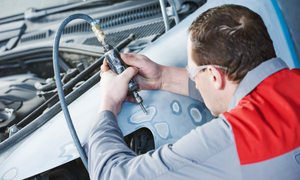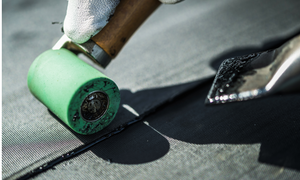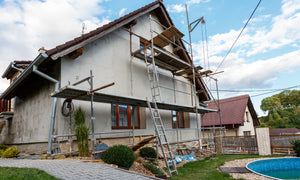The Top 5 Benefits of Using Hot Air Tools for Structural Repairs

Whether you’re working on construction projects, maintenance tasks, or intricate repairs, precision and efficiency are paramount. One of the most effective ways to achieve both is by employing hot air tools.
These versatile instruments offer several advantages for tasks such as welding, soldering, and sealing. In this blog post, we'll explore the top benefits of using hot air tools for structural repairs and how they can enhance the quality and efficiency of your projects.
>>Related read: Top 6 High-Performance Hot Air Tools for Roofing, Construction, and Civil Engineering Contractors
1. Precise Temperature Control
Hot air tools allow for precise temperature control, especially when you use a controller made just for your tool. This feature is crucial for tasks that require specific heat settings to avoid damage or ensure strong bonds. Whether you’re welding plastic components, soldering electrical connections, or sealing seams, the ability to adjust the temperature accurately ensures that you can work with a wide range of materials without compromising their integrity.
This precision helps in achieving professional results and reduces the risk of errors, ultimately saving time and resources.
>>Related read: Key Digital Tools for Your Equipment Lineup
2. Versatility in Application
The versatility of hot air tools is one of their standout benefits. These tools can be used in a variety of applications for structural repairs. A single hot air tool can replace several specialized tools, simplifying your toolkit and reducing costs.
In structural repairs, where different tasks might need to be performed sequentially, having a versatile tool at hand enhances overall project efficiency. Some applications where hot air tools stand out include:
- Welding and soldering: Hot air guns are excellent for plastic welding, joining PVC pipes, and soldering delicate electronic components. The controlled heat prevents damage to surrounding areas.
- Sealing and bonding: When repairing roofs, membranes, or other structures, hot air tools create strong seals. They efficiently bond materials like roofing membranes, tarps, and plastics.
- Repairing flooring: Use a hot air tool to remove damaged vinyl flooring and perform a plastic weld to create a seamless transition between old and new material.
- Paint stripping and surface preparation: Need to remove old paint or soften adhesives? Hot air guns make the job easier by softening the material without damaging the underlying surface.
- Shrink-wrapping and heat shrink tubing: Hot air tools are essential for applying heat shrink tubing to electrical wires or wrapping pallets with shrink film.
>>Related read: How to Execute the 4 Most Common Types of Plastic Welds
3. Increased Efficiency
Hot air tools significantly boost the efficiency of structural repair processes.
Traditional methods of welding or sealing can be time-consuming and labor-intensive. Hot air tools, on the other hand, provide a faster and more streamlined approach.
For example, in plastic welding, a hot air tool heats plastic to the optimal temperature quickly, allowing for a strong and durable bond in a fraction of the time it would take using other methods. Hot air tools also allow you to use focused heat for faster work. This increased efficiency translates to shorter project timelines and reduced labor costs, making hot air tools a smart investment for any construction or maintenance operation.
>>Related read: 10 Plastic Welding Accessories That Can Instantly Improve Your Efficiency
4. Reduced Downtime
Hot air tools’ portability and ease of use mean that they can be deployed swiftly to address issues on-site, reducing the need for extensive preparation or setup. Additionally, because these tools can perform multiple functions, they can address various problems without the downtime needed for switching between different pieces of equipment.
Additionally, traditional repair methods often involve waiting for adhesives to cure. Hot air tools eliminate this downtime. Once the repair is complete, the material cools rapidly, allowing you to move on to the next task.
>>Related read: Basic Welding Tools for Your Equipment Lineup
5. Enhanced Quality
Precision and consistency lead to better results. The precise control over temperature and the consistent heat application ensure that the materials are bonded or sealed uniformly.
This consistency reduces the likelihood of weak spots or failures in the repair, leading to more durable and reliable outcomes. In industries where safety and durability are critical, such as civil engineering and construction, the enhanced quality provided by hot air tools can be a significant advantage.
Whether you’re a professional contractor or a DIY enthusiast, consider adding these tools to your arsenal for successful structural repairs.
>>Related read: Top 6 Civil Engineering Applications for Plastic Welding
Choose the Right Hot Air Tool for Your Structural Repairs
Always make sure the hot air tool you choose aligns with the material compatibility and specific features you need for your structural work. Our team has decades of experience and will talk through your specific application to help you make the right choice.
Why not contact us today to talk about your needs? We help people like you every day to make the best purchasing decisions for brand new tools, accessories, and replacement parts.

- Robert Heater






